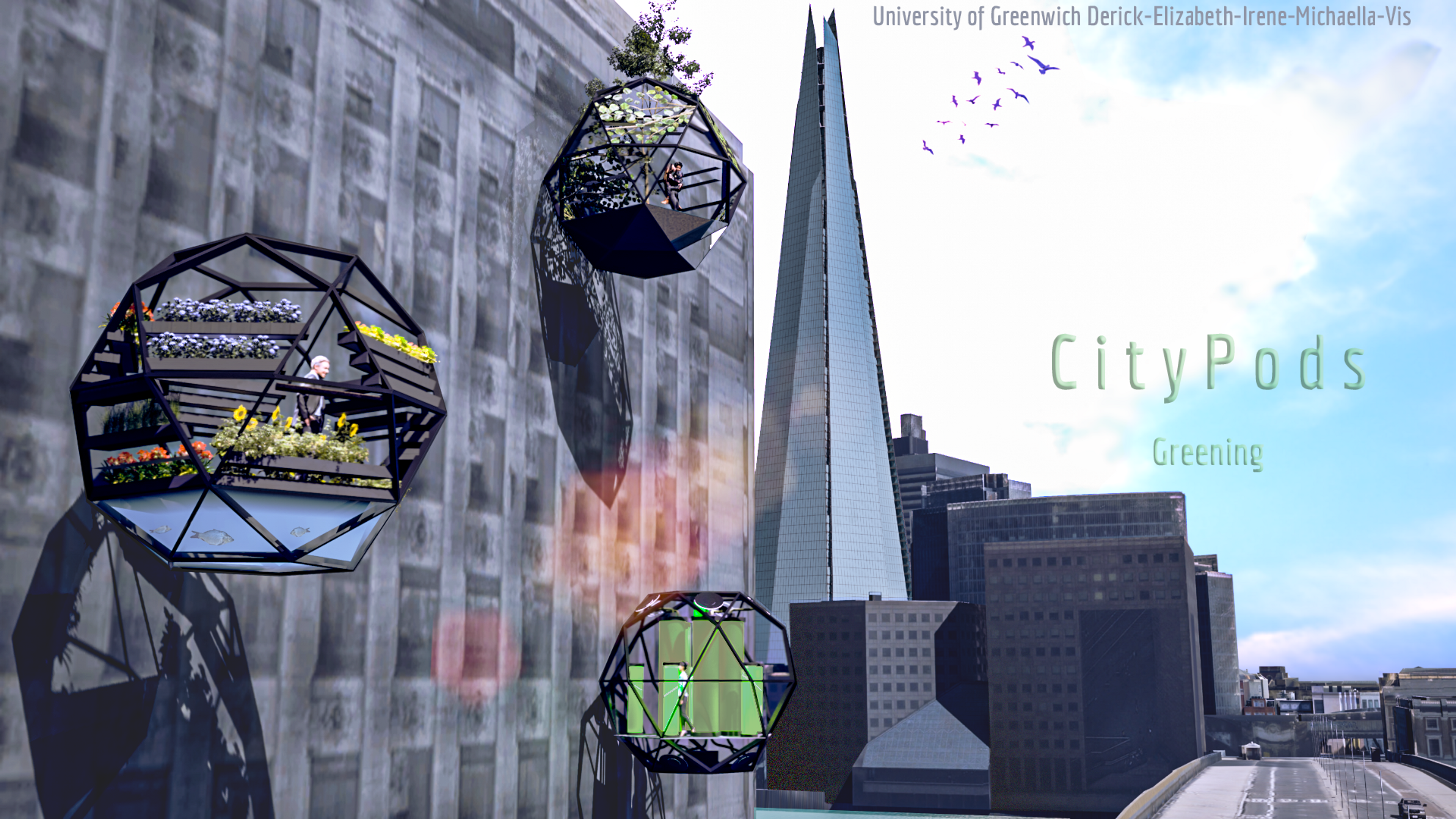Greening
University of Greenwich
Michaella Hadjihanna, Irene Ilunga, Derick Okelo, Sunvisnouk, Pom Elizabeth So
We’ve designed our proposal around three components: biophilia, carbon sequestration and urban farming. Each component is expressed in a corresponding geometric CityPod designed to bring nature closer to the city.
For example, the Calming Pod has a biophilic purpose – it’s a space for people to pause, breathe and even meditate as they take a break from the intensity of the day. This pod has wooden floors with underfloor soil to support a central tree as well as interior plants, flowers and vines. The Cleaning Pod, meanwhile, houses bioreactors that cultivate microalgae to sequester carbon in the air, helping to depollute it. Algae’s ability to absorb and remove carbon dioxide is ten times higher than that of large trees, as its entire body is photosynthetic. These pods employ LED lighting to encourage the algae’s growth and also help light city streets.
Finally, we have the feeding pod, a modern spin on urban farming that uses aquaponics to grow herbs, fruits and vegetables. Aquaponics is a combination of aquaculture and hydroponics in which fish like tilapia and koi are fed and their excrement collected to provide nutrients for plants, helping them grow without the need for soil. The idea is that these pods are attached to a building and their food harvested for consumption by the users of that building.
